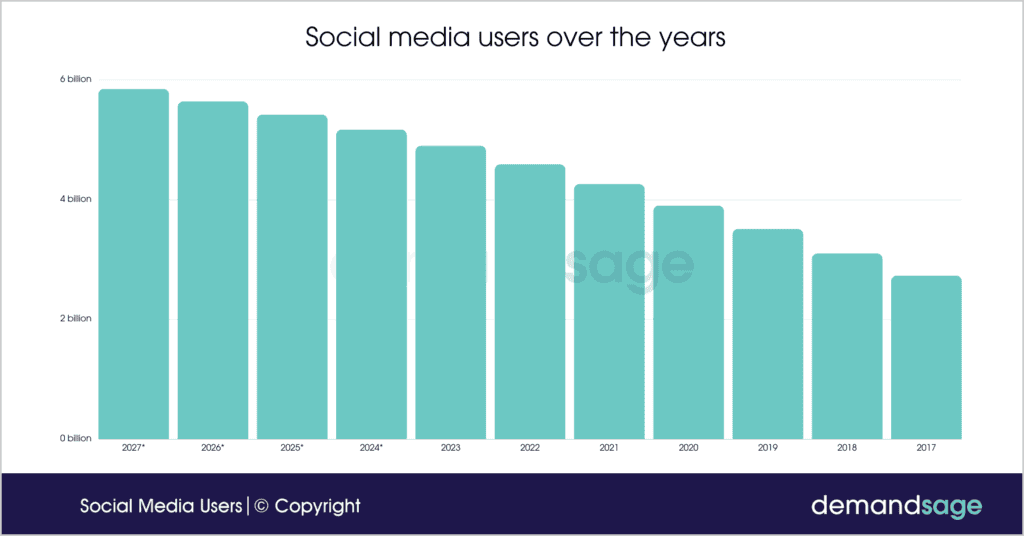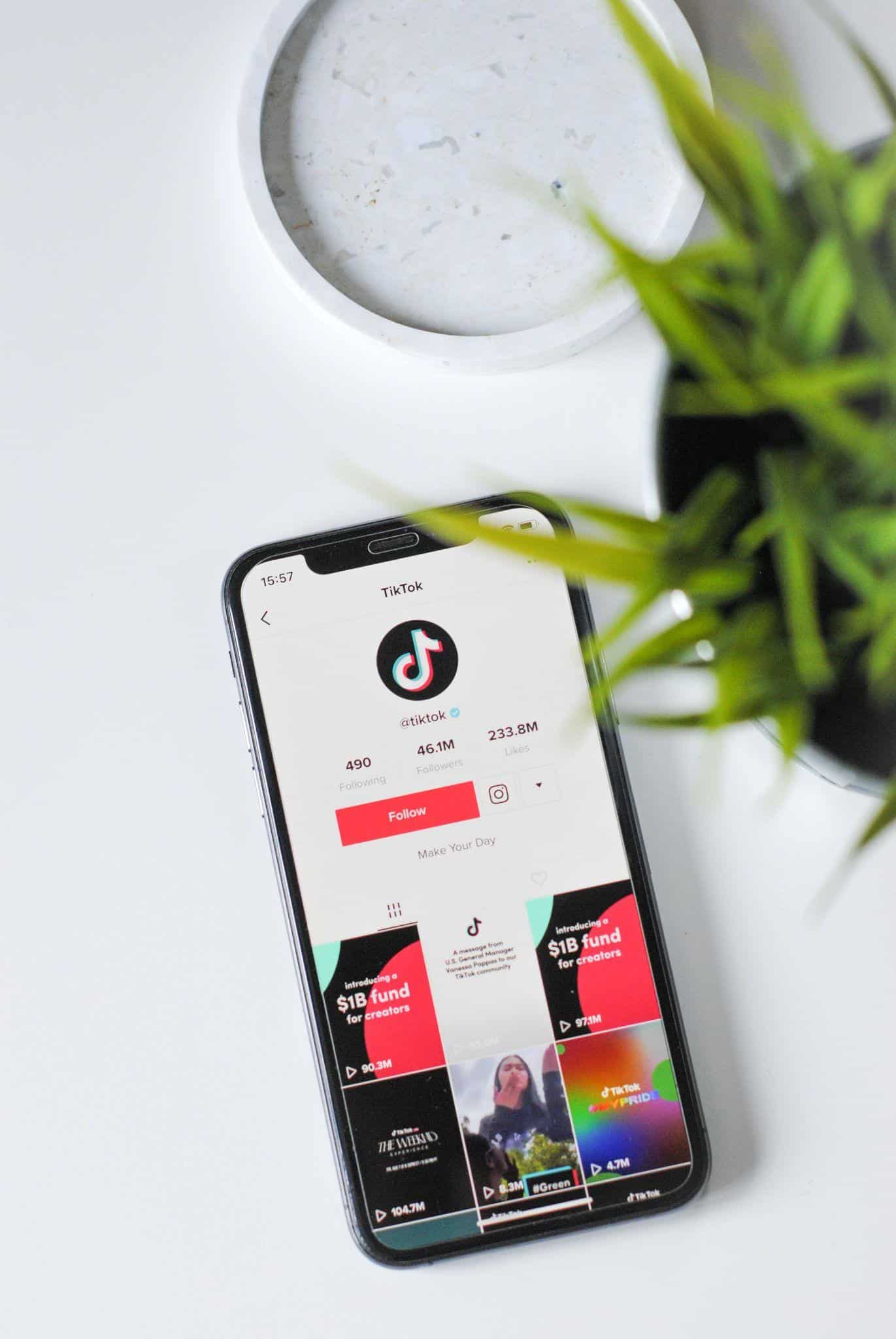According to Statista, 4.95 billion people are using social media in 2024. Facebook is leading the way with 3.05 million users. As expected with such high figures, ad spending on social media is around $300 billion.
It’s a no-brainer: you need a strong presence on social media for optimal brand growth and customer reach. Competition is fierce, however, so how can you ensure you’re standing out and capturing your target audience’s attention? Here, we give you the answers you need to excel as a brand on social media.

Image sourced from demandsage.com
1. Optimize Profile Bios
Understanding the wider social media landscape is crucial for successful sales prospecting. Different social media platforms cater to different demographics. As such, the platforms you target for sales will need to reflect your specific target audience. According to research, the most commonly used social media platform for U.S. adults aged under 30 is Instagram. For those over 30, it’s Facebook.
However, most people’s social media use spans across multiple channels. This highlights the omnichannel nature of modern social media usage. With this understanding, you can see the importance of optimizing profile bios on all channels. Not only will those who use multiple platforms see you more, but you’ll also reach those who favor one platform over another.
When crafting your profile bios, you should consider the unique characteristics of each platform. For instance, a standout Instagram landing page will look different from its equivalent on Facebook. Consider the following:
- Is your bio clear?
- Is it concise?
- Is it easy to find?
- Do your handle and page name emphasize who you are as a brand?
- Have you completed all available fields?
How to Write the Perfect Bio for Your Brand
Before you begin, look at the latest research and sales data available regarding social media marketing so you can tailor your approach for maximum effect. With your research done, draft a selection of bios to get your ideas flowing. Remember, you have around 140 characters (depending on the platform) to make the right impression. If first impressions aren’t great, visitors won’t stick around to find out more.
Most people include their elevator pitch and keywords in their bios. In other words, a concise summary of their product or service that grabs immediate attention and communicates the key information. The use of keywords ensures that their profiles are discoverable to the right audience. Carefully chosen terms will align with common search queries while also capturing the business offer.
Depending on the platform, you may find people using humor, hashtags, or something else quirky to make them different and stand out. However you decide to write your bio, staying on brand is crucial.
In summary, a great bio will explain who you are and what you do while targeting a niche audience.

Free to use image sourced from Unsplash
2. Use a Professional Profile Picture
Alongside a top-notch bio, you need the right profile picture for your brand. Established brands usually use their brand logo. New brands relying on building connections tend to grow quickly by using a personal photo as the face of the brand. Whether you choose a logo or personal photo, it is essential that it exudes professionalism and aligns with your brand identity.
Your profile picture is a virtual handshake that greets new visitors. It influences how they see you and whether they choose to engage with your content. A well-designed logo looks professional, while a personal photo adds a human, relatable element.
3. State Your Value Propositions Clearly
Your value propositions are crucial for sales prospecting on social media. Your audience’s quick understanding of these can help set your brand apart from the competition. Why should they choose your products or services? A clear value proposition forms the basis of a meaningful connection with potential customers while also capturing their attention.
Whether through a tagline or sharing your brand’s ethics and higher purpose, you need to convey what makes your brand unique. Address customer pain points and show how your brand can solve their problems.
A fine example of a brand that successfully shares its value propositions is Dollar Shave Club. The name is the key giveaway: they’re here for affordable shaving products. They also make their audience feel a part of a club by using humorous and relatable content.

Screenshot sourced from Facebook
4. Optimize Keywords
Strategic keyword optimization is an important tool for increasing your discoverability with your target audience. Targeting relevant keywords helps your content and profile reach potential new customers. Keywords should be ingrained into all aspects of your profile: your bio, posts, and captions, for maximum effect.
5. Link to Sales Pages
The link or links you use in your profile will depend upon the platform. Some social media accounts allow you to share multiple links (e.g., Facebook and LinkedIn). Others, however, like Instagram, only allow single links to be shared in your profile. Including links allows your audience to explore your products and services beyond your social page.
There are several targets here. You can use links to direct people to exclusive deals, a specific product, or your homepage. Considering the fleeting attention spans of your audience, it’s wise to plan these carefully. What’s more, using a top-level domain (read this for a comprehensive top level domain definition) like ‘.com’ or ‘.org’ adds a layer of professionalism and trust.
6. Share Good Content Regularly
If you want to establish credibility and be at the forefront of people’s minds when they think about products or services like yours, you need to post high-quality content regularly. This showcases your expertise as a brand and keeps your audience engaged with valuable information.
If you’re doing this already and your posts aren’t gaining enough traction, consider a content revamp or overhaul and refine your strategy. This might mean adapting your posting schedule to suit peak times or changing other elements to adapt to changing trends and platform algorithms. Whether you’re generating leads on TikTok or trying to reach people on X (formerly Twitter), you’ll need to take different approaches.

Free to use image sourced from Unsplash
7. Actively Engage with Prospects
Engagement matters – not just your audience engaging with you, but you with your audience too. Posting content isn’t enough, you should also aim to build meaningful connections by actively participating. This means responding to comments, giving likes, and initiating direct messages. This type of engagement is a powerful tool that creates a community within the brand.
For local businesses with physical stores, consider offering and incorporating the concept of appointment shopping to encourage your audience to physically come to your store. This creates a personalized experience for your customers beyond that of your competitors.
8. Highlight Customer Testimonials
One of the most tried-and-tested ways of optimizing your social media profile for sales prospecting is through positive testimonials and reviews. Using your socials to highlight positive customer experiences is powerful. This provides tangible evidence of your brand’s reliability and quality.
Customer testimonials create a positive narrative around the products and services you offer. Accompanying ratings and reviews also offer a quick and transparent snapshot of your brand. These build trust and are a valuable source of social proof. They show potential customers that your previous customers were happy.
You can leverage social proof on social media channels by sharing real stories, images, or videos from satisfied customers. This creates an authentic representation that resonates with your target audience while also establishing credibility.
9. Make Best Use of ‘Featured’ and ‘Pinned’ Posts
Optimizing your profile means taking advantage of platform-specific features that enhance visibility and emphasize important aspects of your brand. Use the ‘pinned’ post features to direct your audience’s attention to where you want it the most.
Featured posts allow your audience to see announcements and important information that works as a visual storefront. These sections should be carefully curated to align with your sales goals.

Free to use image sourced on Unsplash
10. Maintain a Consistent Brand Image
If you want to establish a strong and recognizable online presence, you need to maintain a consistent brand image across all social media platforms. This creates familiarity and reliability. Though you may be targeting a different demographic on each platform, there are several key elements that need to remain the same. These are:
- Your branding elements: Your logos and visuals are your brand in the eyes of your audience. Keep them the same.
- Your color scheme: A cohesive color scheme contributes to visual recognition and reinforces brand recall.
- Your typography: Whether it’s your logo font or the text in your posts, be consistent with fonts for a polished and professional brand image.
- Your voice and tone: This is your brand’s ‘personality.’ Whether you’re playful or serious, be sure to carry that through on all platforms.
- Your messaging style: Align your messaging style with your brand values. This doesn’t mean you can’t post a range of topics, however. If you are a tech startup, you could both be addressing something technical like cloud native applications and sharing a casual testimonial. Just ensure your messaging style is consistent.
- Your profile information: Keep your bio and contact details the same across all platforms.
11. Use Quality Visuals
Social media, particularly Instagram, is visually driven. As such, the importance of high-quality images can’t be ignored. Great visuals garner more attention. They also communicate professionalism and contribute to the aesthetic appeal of your brand. Here’s why we think optimizing images is worth it:
- First impressions: A visually appealing profile immediately captures the attention of your target audience.
- Professionalism and credibility: High-quality images convey professionalism. They show you’re committed to excellence, which positively influences how your brand is perceived by potential customers.
- Engagement and shareability: Quality images are more likely to be shared. This increases the reach and visibility of your content. With engaging visuals, users are prompted to interact and share. They can even become brand advocates this way.
- Storytelling: Images are important for brand storytelling. They can convey your brand narrative and evoke emotions. This helps to build a deeper connection with your potential customers.
- Algorithm favorability: Algorithms often prioritize content that is visually appealing.

Free to use image from Unsplash
12. Prove Your Existence
Proving your existence in the real world holds significance. It can be very easy to create a false profile and fake brand on social media. Integrating location-based information is crucial when optimizing your social media profiles.
In particular, consider:
- Location: Adding your physical location to your profile shows transparency and authenticity. This information reassures audiences that you’re a tangible entity and that you can be trusted.
- Domain Names: Your domain name is your online address. It is a critical element that represents your brand and contributes to its identity. Choosing an aged domain name that aligns with your brand, has good backlinks profile, is easy to remember, and reflects your industry is much better than using a newly registered domain name. Some businesses in the technology industry might wonder, “is .tech a good domain, or should I go with .ai?” Consider all your options carefully before settling on one.
13. Analyze Data
Leveraging analytics benefits all brands at all levels. It allows you to refine and optimize your approach, providing insights into the performance of your content and audience engagement. Analytics are crucial for optimizing your social media profile because they:
- Allow you to make data-driven decisions.
- Identify which types of content perform well and generate engagement.
- Show you the optimal posting times so you can schedule posts for when your audience is most active.
- Provide insights into your audience demographics, revealing information about your audience’s age, location, and interests. This allows you to better tailor your content to suit them.
- Give you information about social media feedback like comments, shares, and likes. This helps you to understand your audience’s sentiments and preferences.
- Allow you to track campaign success in real time. Having an immediate feedback loop means you can adjust and optimize as you go.

Free to use image from Unsplash
Final Thoughts
In social media, where billions are connected, establishing a strong brand presence is imperative. From crafting an outstanding bio to using analytics, each step we’ve outlined is a move toward increased visibility and resonance.
When brands incorporate these proven techniques, they position themselves in a place where they can thrive and connect meaningfully with their audience.

